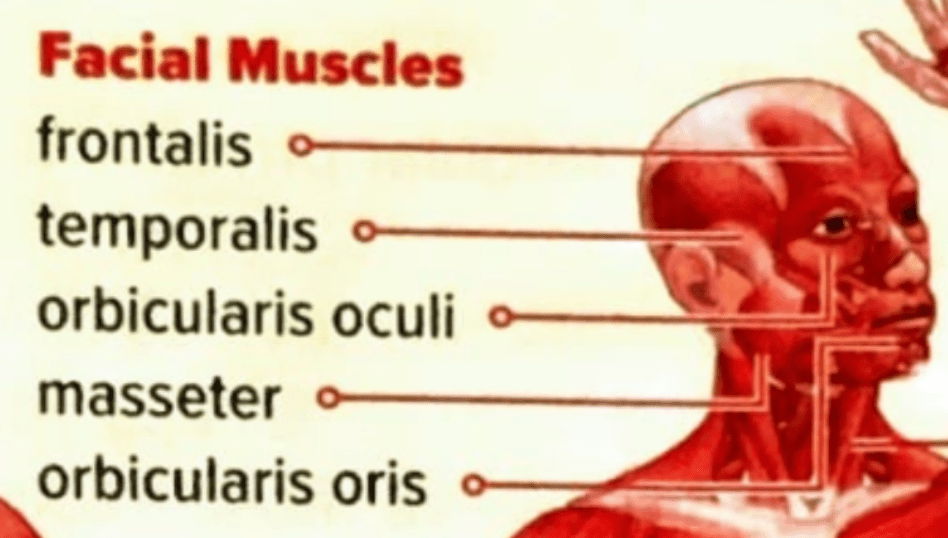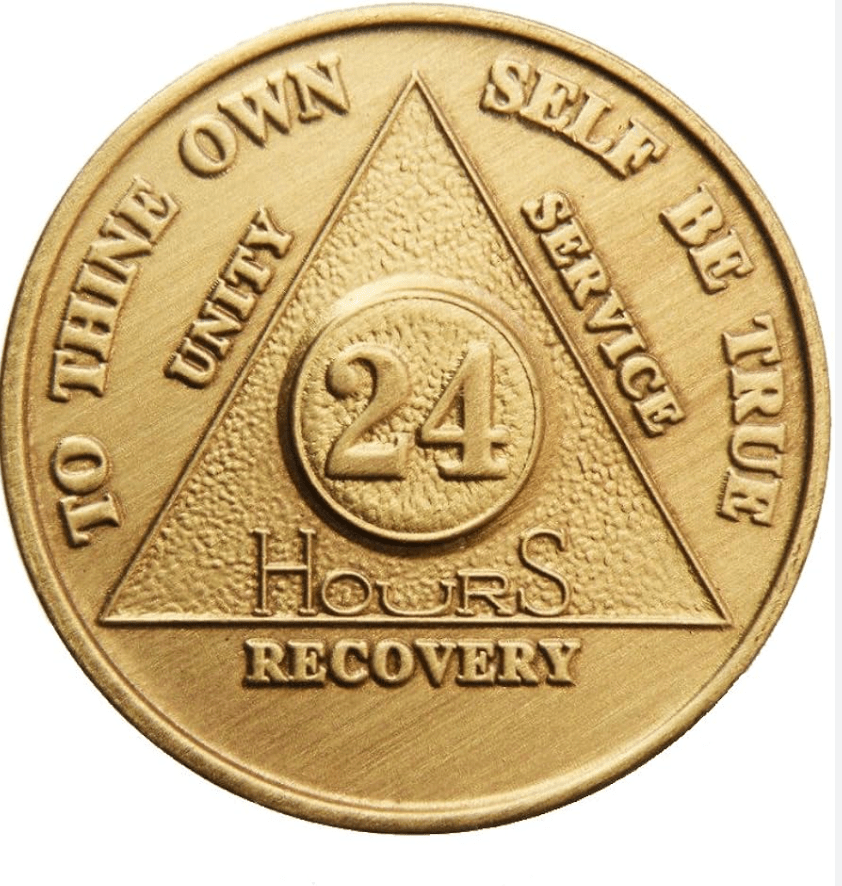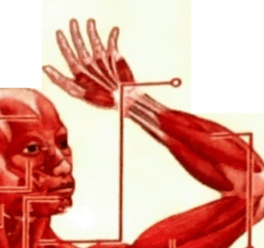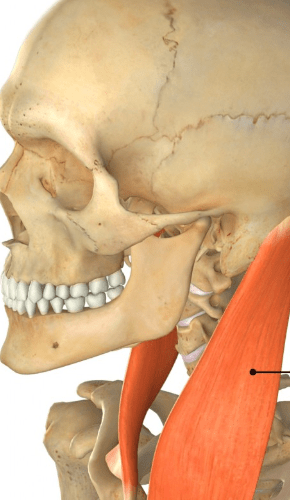(to me)
What number do you call?
988 Suicide & Crisis Lifeline
For emotional and substance use support 24/7
What does AA stand for?
Alcoholics Anonymous
What modern language evolved directly from Latin and has the most similarities to it?
Italian
Name a Greek letter.
- Alpha (Α α)
- Beta (Β β)
- Gamma (Γ γ)
- Delta (Δ δ)
- Epsilon (Ε ε)
- Zeta (Ζ ζ)
- Eta (Η η)
- Theta (Θ θ)
- Iota (Ι ι)
- Kappa (Κ κ)
- Lambda (Λ λ)
- Mu (Μ μ)
- Nu (Ν ν)
- Xi (Ξ ξ)
- Omicron (Ο ο)
- Pi (Π π)
- Rho (Ρ ρ)
- Sigma (Σ σ/ς)
- Tau (Τ τ)
- Upsilon (Υ υ)
- Phi (Φ φ)
- Chi (Χ χ)
- Psi (Ψ ψ)
- Omega (Ω ω)
Name a muscle.
come on.
Name a bone.
please.
What's the most common addiction in Philadelphia?
In Philadelphia, like in many urban areas, substance use disorders involving opioids, including heroin and prescription painkillers like oxycodone, have been a significant issue. Opioid addiction has been a public health crisis across the United States, and Philadelphia has not been immune to its effects. Additionally, alcohol addiction remains a prevalent concern, along with stimulants like cocaine and methamphetamine. However, the specific prevalence of each type of addiction can vary over time and may depend on factors such as demographics, availability of substances, and local treatment resources.
Fentanyl, a strong synthetic opioid, is the Philadelphia area's top local drug threat, according to local officials. In 2022, Philadelphia had a total of 1,413 overdose deaths according to data from the Philadelphia Department of Public Health.
When was AA created?
1935
Name a commonly used medical term that is not of Latin or Greek origin.
answers may vary.
Name a commonly used medical term that is not of Latin or Greek origin.
answers may vary.
An extensor muscle opens a joint, and a _______ muscle closes it.
flexor
How do you strengthen your bones?
Dietary Calcium: Consume foods rich in calcium, such as dairy products (milk, cheese, yogurt), leafy green vegetables (kale, spinach, broccoli), tofu, almonds, and fortified foods. Calcium is essential for bone strength and density.
Vitamin D: Ensure an adequate intake of vitamin D, which helps the body absorb calcium. Sources of vitamin D include sunlight exposure, fatty fish (salmon, tuna), fortified foods (milk, orange juice, cereals), and supplements if needed.
Regular Exercise: Engage in weight-bearing and muscle-strengthening exercises regularly. Weight-bearing activities like walking, jogging, dancing, and resistance exercises help stimulate bone formation and maintain bone density.
Limit Alcohol and Caffeine: Limit alcohol consumption and reduce intake of caffeine-containing beverages, as excessive alcohol and caffeine can interfere with calcium absorption and affect bone health.
Quit Smoking: If you smoke, quit smoking. Smoking has been linked to decreased bone density and increased risk of fractures.
Maintain a Healthy Weight: Maintain a healthy body weight through balanced nutrition and regular physical activity. Being underweight or overweight can negatively impact bone health.
Limit Soda and Sugary Drinks: Limit consumption of sugary sodas and drinks, as they may displace calcium-rich beverages and contribute to bone loss.
Get Regular Check-ups: Schedule regular check-ups with your healthcare provider to monitor bone health and discuss any concerns or risk factors for osteoporosis or other bone-related conditions.
Supplements if Necessary: Consider calcium and vitamin D supplements if you are unable to meet your daily requirements through diet alone or if advised by your healthcare provider.
Fall Prevention: Take steps to prevent falls and reduce the risk of fractures, especially in older adults. This may include removing tripping hazards, improving lighting, using assistive devices, and participating in balance and strength training exercises.
How do you know if someone is an addict?
Obsession:
Preoccupation with obtaining and using the substance or engaging in the addictive behavior.
Loss of Control:
Inability to limit or stop substance use or behavior despite negative consequences.
Withdrawal Symptoms:
Experiencing physical or psychological withdrawal symptoms when attempting to stop using the substance or engaging in the behavior.
Tolerance:
Needing increasingly larger amounts of the substance or engaging in more frequent behaviors to achieve the desired effect.
Interference with Daily Life:
Neglecting responsibilities, relationships, or hobbies due to substance use or addictive behavior.
Continued Use Despite Harm:
Persisting in substance use or behavior despite awareness of its negative impact on physical health, mental well-being, or relationships.
Secrecy and Deception:
Hiding substance use or addictive behaviors from others and being dishonest about the extent of the problem.
How many steps are in the program?
12
What percentage of medical terms come from Latin?
60-70%
What percentage of medical terms come from Greek?
25-35%
What are the three types of muscles?
Skeletal Muscle: Skeletal muscles are attached to bones by tendons and are responsible for voluntary movements of the body, such as walking, running, and lifting objects. They are striated in appearance due to the arrangement of muscle fibers and are under conscious control.
Smooth Muscle: Smooth muscles are found in the walls of internal organs, blood vessels, and other structures throughout the body. They are responsible for involuntary movements and functions, such as peristalsis (contractions of the digestive tract) and regulation of blood flow. Smooth muscles are not striated and are controlled by the autonomic nervous system.
Cardiac Muscle: Cardiac muscle is found only in the heart and is responsible for pumping blood throughout the body. It is striated like skeletal muscle but is involuntary like smooth muscle. Cardiac muscle cells are interconnected and coordinated to produce rhythmic contractions that maintain the heartbeat.
The skeletal system is comprised of bones and WHAT?
connective tissue
What are the top five coping mechanisms used by teenagers?
Denial: Teenagers may refuse to acknowledge unpleasant or threatening realities, such as denying the severity of a problem or avoiding responsibility for their actions.
Projection: Teenagers might project their own unacceptable feelings, impulses, or traits onto others, attributing their negative emotions to someone else instead of confronting them internally.
Regression: When faced with stress or conflict, teenagers may revert to behaviors or coping mechanisms from an earlier stage of development, such as acting childish, throwing tantrums, or seeking comfort from parents like a younger child.
Rationalization: Teenagers may use rationalization to justify their actions or decisions, creating logical explanations or excuses to avoid feelings of guilt or shame.
Avoidance: Teenagers might avoid confronting difficult situations, emotions, or responsibilities altogether, either by distracting themselves with other activities or withdrawing from social interactions.
The foundation of AA is ___________; it offers treatment but not a cure for alcohol addiction.
abstinence
Name a Latin prefix, the meaning of the prefix, a medical term with the prefix, and the meaning of the medical term.
Some of the most common Latin prefixes include:
- Con-: Meaning "with" or "together" (e.g., "connect," "contribute").
- Dis-: Signifying "apart" or "away" (e.g., "disappear," "dissolve").
- Ex-: Denoting "out of" or "former" (e.g., "exit," "ex-president").
- In- or Im-: Indicating "not" or "into" (e.g., "inactive," "impractical").
- Inter-: Meaning "between" or "among" (e.g., "interact," "international").
- Pre-: Signifying "before" (e.g., "preview," "preparation").
- Re-: Denoting "again" or "back" (e.g., "return," "rebuild").
- Sub-: Meaning "under" or "below" (e.g., "submarine," "substandard").
- Super-: Signifying "above" or "beyond" (e.g., "superior," "supernatural").
- Trans-: Indicating "across" or "beyond" (e.g., "transport," "transatlantic").
Name a Greek prefix, the meaning of the prefix, a medical term with the prefix, and the meaning of the medical term.
- Anti-: Meaning "against" or "opposite" (e.g., "antibiotic," "antifreeze").
- Bio-: Denoting "life" or "living organisms" (e.g., "biology," "biodegradable").
- Eco-: Signifying "house" or "environment" (e.g., "ecosystem," "ecofriendly").
- Hypo-: Indicating "below" or "under" (e.g., "hypothermia," "hypodermic").
- Hyper-: Meaning "above" or "beyond" (e.g., "hyperactive," "hypertension").
- Mono-: Denoting "one" or "single" (e.g., "monochrome," "monopoly").
- Poly-: Signifying "many" or "much" (e.g., "polygon," "polyester").
- Tele-: Indicating "distant" or "far off" (e.g., "television," "telecommunication").
- Micro-: Meaning "small" or "tiny" (e.g., "microscope," "microbiology").
- Mega-: Denoting "large" or "great" (e.g., "megaphone," "megabyte").
What is tendonitis?
Tendonitis is inflammation or irritation of a tendon, commonly caused by overuse or injury. Symptoms include pain, swelling, stiffness, and weakness in the affected area. Treatment typically involves rest, ice, NSAIDs, and physical therapy. Severe cases may require corticosteroid injections, PRP therapy, or surgery.
What are THREE FUNCTIONS of the skeletal system?
Support: The skeleton provides structural support for the body, giving it shape and rigidity. It forms the framework that supports and holds the body's soft tissues and organs in place.
Protection: The bones of the skeleton protect vital organs and tissues from injury. For example, the skull protects the brain, the rib cage protects the heart and lungs, and the vertebral column protects the spinal cord.
Movement: The skeletal system works in conjunction with muscles to allow movement of the body. Muscles attach to bones via tendons, and when muscles contract, they pull on the bones, causing movement at the joints.
Mineral Storage: Bones serve as a reservoir for essential minerals, particularly calcium and phosphorus. These minerals are stored in the bone matrix and can be released into the bloodstream as needed to maintain mineral balance in the body.
Blood Cell Production: Within the bone marrow, specialized cells called hematopoietic stem cells produce red blood cells, white blood cells, and platelets through a process called hematopoiesis. This function is crucial for the body's immune system and oxygen transport.
Energy Storage: In addition to minerals, bones also store fat in the form of yellow bone marrow. This fat serves as an energy reserve for the body and can be mobilized during times of energy demand.
Hormone Regulation: Bones produce and regulate several hormones involved in metabolism, including osteocalcin, which helps regulate blood sugar levels, and osteopontin, which plays a role in immune response and inflammation.
What are THREE of the top seven sources of stress for teens in Philly?
Academic Pressure: High expectations from parents, teachers, or peers, along with concerns about grades, exams, and college admissions, can contribute to significant stress.
Violence and Crime: Exposure to community violence, crime, or gang activity can create fear, anxiety, and trauma for teens living in certain neighborhoods of Philadelphia.
Poverty and Economic Hardship: Financial instability, lack of access to basic needs, and the challenges of growing up in low-income households can be sources of stress for many teens in Philadelphia.
Family Dysfunction: Family conflicts, domestic violence, substance abuse, divorce, or parental incarceration can disrupt family dynamics and contribute to stress at home.
Social Pressures: Peer pressure, social media influence, bullying, discrimination, and the desire to fit in or meet societal expectations can be significant sources of stress for teens navigating social relationships and identity development.
Mental Health Issues: Prevalence of mental health disorders such as anxiety, depression, and post-traumatic stress disorder (PTSD) can contribute to stress among teens, especially if access to mental health resources is limited.
Substance Abuse: Exposure to drugs, alcohol, or substance abuse within their communities or peer groups can lead to stress, addiction, and other negative consequences for teens in Philadelphia.
What is the serenity prayer? (Recite it).
"God, grant me the serenity to accept the things I cannot change, Courage to change the things I can, And wisdom to know the difference."
Name a Latin suffix, the meaning of the prefix, a medical term with the prefix, and the meaning of the medical term.
- -us/-a/-um: Denoting gender and case in Latin nouns and adjectives (e.g., "servus" - slave, "feminus" - feminine, "bonum" - good).
- -tion/-sion/-ion: Indicating action or condition (e.g., "information," "extension," "inflation").
- -ity: Signifying state, quality, or condition (e.g., "security," "creativity," "diversity").
- -ment: Meaning the result or product of an action (e.g., "movement," "treatment," "development").
- -ive: Denoting relating to or having the nature of (e.g., "assertive," "creative," "active").
- -able/-ible: Indicating capable of being (e.g., "adjustable," "visible," "edible").
- -ary/-ory: Signifying relating to or characterized by (e.g., "dictionary," "refractory," "observatory").
- -er/-or: Meaning one who performs an action (e.g., "teacher," "actor," "doctor").
- -mentum: Denoting instrument or means (e.g., "documentum" - document, "ornamentum" - ornament).
- -alis/-ilis: Indicating relating to or characterized by (e.g., "formalis" - formal, "fragilis" - fragile).
Name a Greek suffix, the meaning of the prefix, a medical term with the prefix, and the meaning of the medical term.
- -logy: Denoting "study" or "science of" (e.g., "biology," "psychology").
- -phobia: Meaning "fear of" (e.g., "arachnophobia," "claustrophobia").
- -graphy: Indicating "process of writing" or "description" (e.g., "geography," "autobiography").
- -ism: Signifying "doctrine" or "belief" (e.g., "capitalism," "feminism").
- -ology: Meaning "study of" or "branch of knowledge" (e.g., "geology," "sociology").
- -ic: Denoting "related to" or "pertaining to" (e.g., "academic," "athletic").
- -phile: Indicating "lover of" or "enthusiast for" (e.g., "bibliophile," "cinephile").
- -ize/-ise: Signifying "to make" or "to become" (e.g., "modernize," "realize").
- -cracy: Meaning "rule by" or "government by" (e.g., "democracy," "bureaucracy").
- -itis: Denoting "inflammation" or "disease" (e.g., "arthritis," "tonsillitis").
Name two muscles in your face.

What are the different types of connective tissue in the skeletal system?
Cartilage: Cartilage is a flexible connective tissue found in various parts of the body, including the joints, rib cage, and nose. It consists of chondrocyte cells embedded in a matrix of collagen fibers and proteoglycans. Cartilage provides cushioning and support to the joints, allowing for smooth movement, and also helps maintain the shape of certain structures, such as the nose and ears.
Tendons: Tendons are fibrous connective tissues that connect muscle to bone. They are composed primarily of collagen fibers arranged in parallel bundles. Tendons transmit the force generated by muscles to the bones, allowing for movement of the skeletal system.
Ligaments: Ligaments are fibrous connective tissues that connect bone to bone, providing stability and support to the joints. Like tendons, ligaments are primarily composed of collagen fibers, but they are more elastic and flexible to allow for joint movement while preventing excessive motion.
Periosteum: The periosteum is a dense layer of connective tissue that covers the outer surface of bones. It consists of fibrous and cellular layers containing blood vessels, nerves, and osteogenic cells. The periosteum plays a crucial role in bone growth, repair, and nutrition.
Bone Tissue (Osseous Tissue): Bone tissue is the primary structural component of the skeletal system. It is composed of cells called osteocytes embedded within a matrix of collagen fibers and mineral salts, primarily calcium and phosphorus. Bone tissue provides strength, support, and protection to the body and serves as a reservoir for minerals.
What is the number one thing you need to remember if you care about someone struggling with addiction?
"You can't help someone who's unwilling to help themself."
In AA, what does one receive as a "trophy" after reaching a milestone (e.g. one year sober)?
A chip, coin, medallion

Name five modern languages that come from (Vulgar) Latin. These languages are called the ________ languages.
French: Evolved from Vulgar Latin spoken in the region known as Gaul (modern-day France).
Spanish: Developed from Vulgar Latin spoken in the Iberian Peninsula (modern-day Spain and Portugal).
Italian: Evolved from Vulgar Latin spoken in the Italian Peninsula.
Portuguese: Originated from Vulgar Latin spoken in the western regions of the Iberian Peninsula.
Romanian: Derived from Vulgar Latin spoken in the eastern Roman Empire, particularly in the region of Dacia (modern-day Romania).
ROMANCE
Create a new medical term using a Greek prefix and/or suffix and tell us its meaning.
Whoopigoldbergophobia - Fear of hosting The View on ABC.
What is this muscle?


sternocleidomastoid
Name FIVE bones in your body. Hurry. You have 10 seconds.